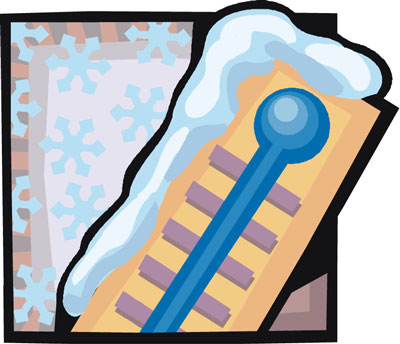Gardening This Weekend: October 26, 2017
This section was the single biggest change when we made e-gardens weekly. For 15 years I published a monthly “things to do” section, but it was tough to keep it relevant for 30 days. Perhaps you’ve noticed: Texas weather can change in 30 minutes, let alone 30 days! We’re about to see that over the next day or two alone.

Photo: Temperatures will soon be near freezing in parts of Texas. Better read what to do to protect tender plants at your place.
CRITICAL NOTE about the first freeze or killing frost…
If temperatures in your part of Texas are forecast to drop down near freezing, you need to be worried about a killing frost damaging your tender plants.
I spent an hour earlier today looking at the forecasts for Friday and Saturday nights across Texas. It’s pretty obvious that this front is going to bring near-freezing temperatures to the northern 30 to 40 percent of the state and leave South Texas alone for the time being. You probably have a weather app like The Weather Channel or Weather Bug on your smart phone. I like Weather Bug because it allows me to keep as many stations as I want. Friday night seems to be forecast to be the colder of the two nights.
Here’s part of what I found: Amarillo will drop to 28, Perryton to 26, San Angelo to 33, Midland to 36, Fort Davis to 32, Alpine to 34, McKinney to 32, Weatherford to 34, much of DFW to 35, Abilene to 34 and Tyler to 34.
Those are all temperatures where killing frost can form on the leaves. Some of them are cold enough (32F) that tender plants will actually freeze completely. Here is information I leave archived in the FAQ pages of my website on what you should do the first really cold night.
PLANT
• Pansies, snapdragons, pinks, ornamental cabbage and kale and other cold-hardy annuals, even if it means removing summer annuals that have served you well. The new plants need the head start to get themselves going.
• This is just about your last call for digging and dividing spring-blooming perennials.
• Daffodils and grape hyacinths as soon as you buy them. Choose daffodils and narcissus that have the best chance of “naturalizing” (blooming in successive years). Best types include Carlton, Ice Follies, Geranium, Cheerfulness, Golden Cheerfulness and other early and smaller-flowering types.
• Buy tulips and Dutch hyacinths immediately, then place them at 45 F. in the refrigerator for at least 45 days to give them artificial chilling. Without it in Texas they won’t bloom normally. Plant around mid-December.
PRUNE
• Lawn at regular mowing height. Raising the blade does not help improve winter hardiness at all. Bag fallen tree leaves. Compost them or use them as mulch. Don’t send them to the landfill.
• Trim away spent flower stalks and dead leaves from perennials to tidy things up. As soon as first frost kills tops to ground trim off all the frozen tissues and apply a 2- to 3-inch layer of shredded tree leaves as mulch over the clumps.
• Remove dead branches from shade trees while you can easily identify them. It’s much more difficult when their branches are all bare.
FERTILIZE
• Cut back on fertilizer given to patio pots and hanging baskets that you intend to bring indoors for winter. They won’t need the nutrition. Your goal will be to limit new growth in darker household conditions.
• Ryegrass and fescue turf with a high-nitrogen or all-nitrogen lawn food. Use half the recommended rate for ryegrass that you’ve used to overseed bermuda or St. Augustine. Use the recommended rate for permanent fescue turf. Unless you are very near the Texas Gulf Coast, it is too late to fertilize St. Augustine or bermuda that has not been overseeded.
ON THE LOOKOUT
• Inspect patio pots and hanging baskets you intend to bring in for the winter for insects. Treat while they’re still outside. It’s much easier to do so when you don’t have to worry about odors indoors.
• Time is running out to apply a glyphosate-only herbicide to grasses growing where you’d like to develop a flower or vegetable garden. Once a freeze turns the grass brown you won’t be able to spray until mid- or late spring. Determine bed placement now, and get the spraying done immediately.
• Brown patch is turning circular areas of St. Augustine yellow, then brown. Blades pull loose from the runners quite easily. Apply a labeled turf fungicide to stop it. The grass will bounce back unless you get a killing freeze, but you can speed it along by stopping the spread of the fungus.
